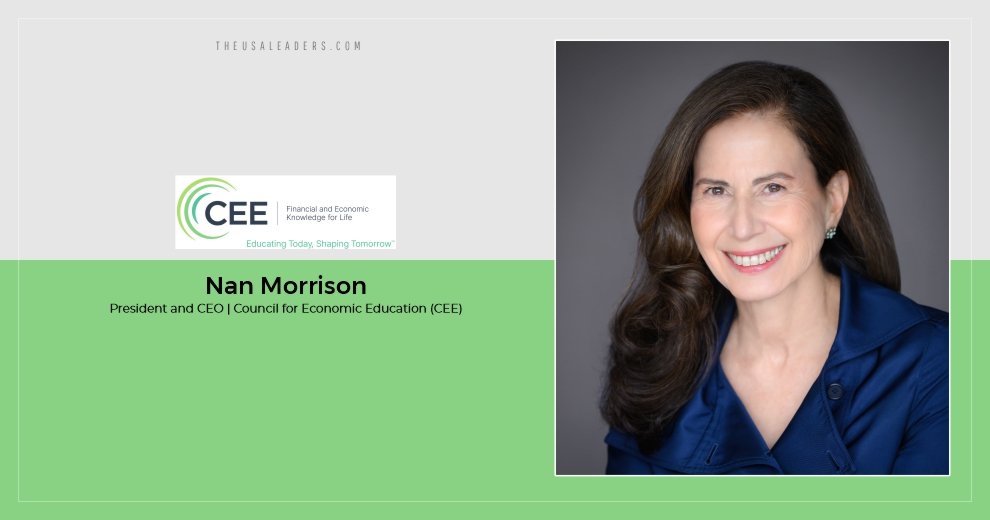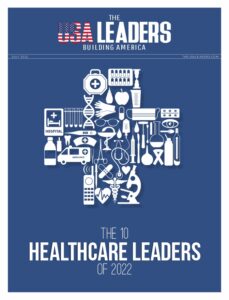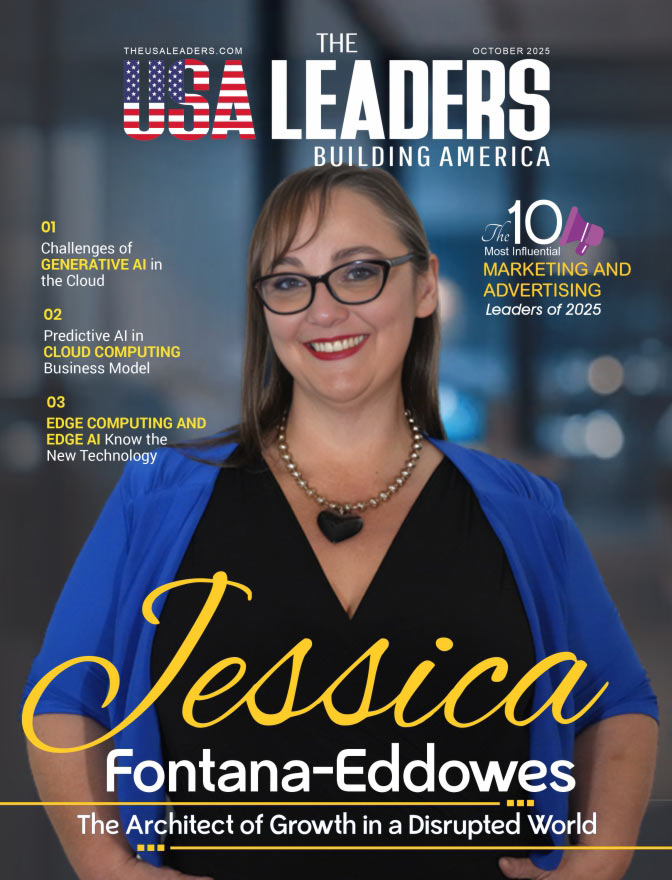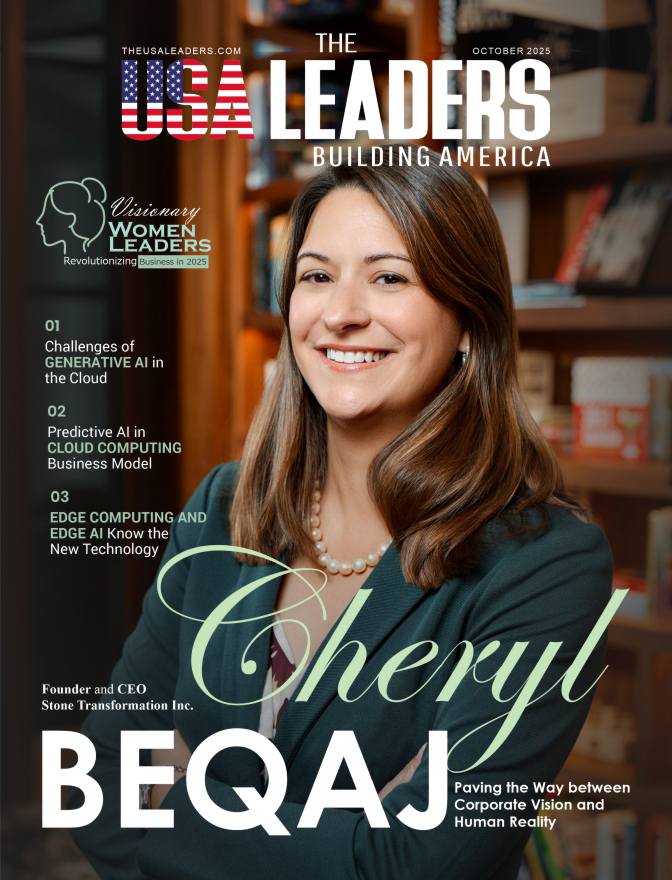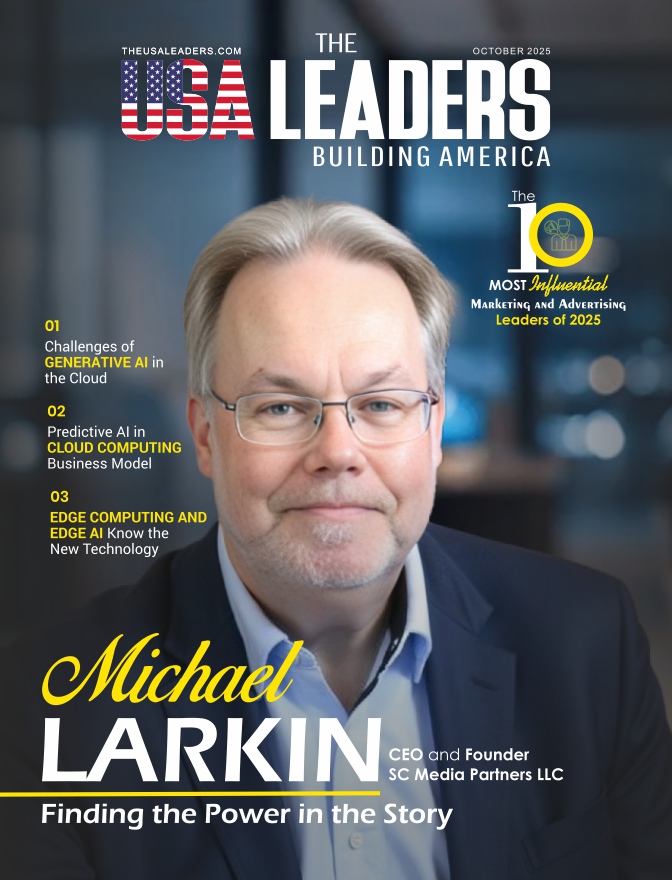When it comes to making an impact, few leaders combine vision with execution, such as Nan Morrison. As President and CEO of the Council for Economic Education (CEE), Nan doesn’t just lead an organization—she leads a mission to transform economic and financial literacy for millions of students across the United States. Under her guidance, CEE has grown its outreach, advanced its digital transformation, and pushed for a policy that shapes financial literacy standards in K–12 education. But Nan’s journey and CEE’s influence go deeper, fueled by a drive to create opportunities for all, especially students in underserved communities.
The Visionary Mindset behind the Council for Economic Education
Nan’s background is as unique as her approach. With an impressive career that includes roles at top consulting firms like BCG and Accenture, she brings the analytical rigor of the private sector to the nonprofit world. She understands how data and technology drive decision-making and performance—skills she applied to CEE’s own digital overhaul, making resources available and accessible to teachers and students alike. But for Nan, leading an organization like CEE means more than hitting metrics; it’s about steering a movement that makes a difference in the lives of young people.
“Everyone deserves the skills to navigate their financial futures,” Nan often says. And it’s this principle that drives every initiative at CEE. Through programs that teach not only economics but also personal finance, Nan’s focus remains on giving students, especially those from low-income backgrounds, the tools to make informed choices, manage their resources, and understand the economy around them.
Tackling the Financial Literacy Gap
The need is clear: only half the states in the U.S. require personal finance education in high schools, and in the places that don’t, students from under-resourced areas often miss out on these critical skills. Nan knows that without early exposure to financial concepts, many young people risk missing out on knowledge that could shape their economic futures. Under her leadership, CEE actively campaigns for policy changes to expand access to financial education, setting the stage for students to achieve financial stability and economic mobility.
Programs like Invest in Girls stand as a testament to Nan’s commitment. Recognizing the gap in representation, especially for low- and moderate-income young women of color in financial services, CEE’s Invest in Girls program provides a powerful bridge. It introduces these students to career paths they might not otherwise consider, opening doors to financial services—a sector that promises pathways to long-term financial security.
Building a Sustainable Future for Economic Education
Nan’s leadership philosophy is centered around results. She believes in building a team that reflects the diversity of the communities CEE serves. With more than two-thirds of CEE’s team comprising women and people of color, Nan emphasizes that having a range of perspectives is essential to creating stronger, more inclusive programs. This commitment to inclusivity is not just a core value but a practical approach to problem-solving and innovation at CEE.
For Nan, reaching as many students as possible with high-quality programs is essential. But she’s equally focused on the quality of these programs. Surveys show that over 90% of CEE’s teacher training programs earn high marks in satisfaction, with educators citing their practical value and impact in the classroom. It’s this attention to quality that sets CEE apart in the field of economic education, positioning it as a trusted resource for educators and policymakers alike.
Digital Transformation: A Key to Expanding Reach
Nan’s work with leading consulting firms taught her the value of leveraging technology for growth. At CEE, she’s applied that knowledge to bring the organization’s resources to a digital platform, allowing them to reach even more educators and students. Now, CEE’s online platform, EconEdLink, provides accessible resources for teachers looking to incorporate financial literacy and economics into their curriculum. The platform, which now hosts over 500,000 users annually, ensures that CEE’s curriculum can be accessed anywhere, offering flexibility for teachers and making the lessons more engaging for students.
Digital tools have also helped CEE respond swiftly to new challenges. When the COVID-19 pandemic upended traditional classrooms, CEE pivoted, developing online resources that addressed the economic impacts of the pandemic in real-time. The organization even added new content to explain the significance of trending market events like the GameStop saga. For Nan, it’s about staying relevant and making economics understandable and engaging for the next generation.
Achievements that Speak Volumes
Under Nan’s leadership, CEE has launched initiatives that directly address the challenges of financial literacy today. Financial Fitness for Life, CEE’s award-winning curriculum, has become a cornerstone of financial education in the U.S. Trusted by teachers and researchers alike, it continues to serve as a go-to resource in classrooms nationwide. Meanwhile, CEE’s National Personal Finance Challenge has given thousands of high school students the chance to test their financial knowledge and build confidence in their money-management skills.
Beyond the curriculum, CEE’s Survey of the States has become the nation’s most cited report on the status of financial and economic education, influencing policy discussions at both state and federal levels. Nan’s work has ensured that this survey not only reflects the current landscape but also highlights the critical need for improvement, furthering CEE’s advocacy efforts and driving positive change.
Charting a Path for Women’s Empowerment in Finance
Nan has never shied away from discussing the unique hurdles she’s faced as a woman in leadership. Though grateful for her mentors, she has observed that, unlike her male counterparts, she often had to provide tangible proof of her capabilities to advance. This experience fuels her commitment to creating spaces where women in finance can thrive, unencumbered by outdated expectations. Through programs like Invest in Girls, Nan is actively breaking down those barriers for the next generation of women leaders.
As an industry thought leader, Nan’s voice resonates far beyond CEE. Publications like The New York Times, CNBC, and The Wall Street Journal frequently seek her expertise in economic education. She has spoken on prestigious stages, including the Milken Global Conference, amplifying CEE’s mission to a global audience.
CEE’s Mission: Making Financial Literacy Equitable
One of Nan’s core priorities is ensuring that all students, regardless of background, have access to high-quality economic education. CEE’s Access Zone program, for instance, provides financial education specifically for students from low- and moderate-income communities, focusing on building participation among Black and Hispanic students in the National Personal Finance Challenge. Today, nearly 40% of participants in CEE’s programs come from these backgrounds, a testament to Nan’s unwavering commitment to equity.
For Nan, success isn’t defined solely by numbers, but by impact. She believes in making financial literacy a foundational part of every child’s education, giving them the tools to navigate the complexities of the modern economy with confidence.
Looking Forward: Nan’s Vision for Scaling Impact
Nan’s journey with CEE is far from over. She’s set her sights on expanding CEE’s most successful programs, including growing the National Personal Finance Challenge and scaling Invest in Girls to reach more communities. Advocacy will remain a core component of CEE’s strategy, as Nan and her team work to secure more financial literacy standards in schools across the U.S.
And while CEE’s digital transformation has already made waves, Nan sees even more opportunities for innovation. The next chapter for CEE involves continuing to integrate emerging technologies, expanding the digital curriculum, and strengthening their online learning platforms to ensure they can reach every teacher and student, no matter where they are.
The Takeaway: Lessons from a Purpose-Driven Leader
Nan Morrison’s story is one of vision, grit, and purpose. Her journey reminds us that leadership is about more than achieving metrics—it’s about driving change that creates lasting value. By transforming CEE and making financial education accessible to millions, she’s helping build a more financially informed, resilient generation.
Her advice for leaders? “Listen, keep moving forward, be willing to make tough calls, and always speak up for what you believe in.” And for Nan, there’s no finish line—just the next opportunity to make a difference.
Also Read: The 10 Most Dynamic Women Leaders to Watch in 2024


